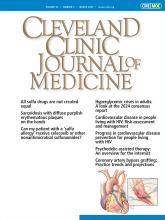We appreciate the detailed response to our article on insomnia in older adults.1 As Dr. Katyal points out, there are several underlying causes of insomnia that should be addressed before beginning therapy for primary insomnia. As we discuss in our article, before initiating therapy, it is important to screen for not only restless legs syndrome, but also sleep apnea, thyroid conditions, chronic pain, migraine, chronic obstructive pulmonary disease, asthma, congestive heart failure, gastroesophageal reflux disease, psychiatric conditions, and substance use disorders.1 Our article discusses management of insomnia assuming it is primary insomnia—that is, where these other causes have been ruled out.
We thank Dr. Katyal for pointing out that the term restless limb syndrome is more appropriate, as the disorder can occur in the upper extremities as well. We appreciate and agree with the American Academy of Sleep Medicine recommendations2 to use gabapentin and pregabalin to treat restless legs syndrome, but we should emphasize that these agents have no recognized role in the treatment of primary insomnia and can be hazardous in older adults due to their association with hip fracture and falls among frail and elderly patients.3,4
We concur that mirtazapine, amitriptyline, and diphenhydramine should be avoided for the treatment of primary insomnia. As our article states, amitriptyline and diphenhydramine are problematic in the elderly population because of their anticholinergic properties, and mirtazapine is not recommended except in the treatment of depression and insomnia associated with depression.1
Finally, we would like to reiterate that, in the case of primary insomnia in the elderly, no pharmacologic agent is considered first line, and providers should initiate treatment with cognitive behavioral therapy for insomnia whenever feasible.1
- Copyright © 2025 The Cleveland Clinic Foundation. All Rights Reserved.






